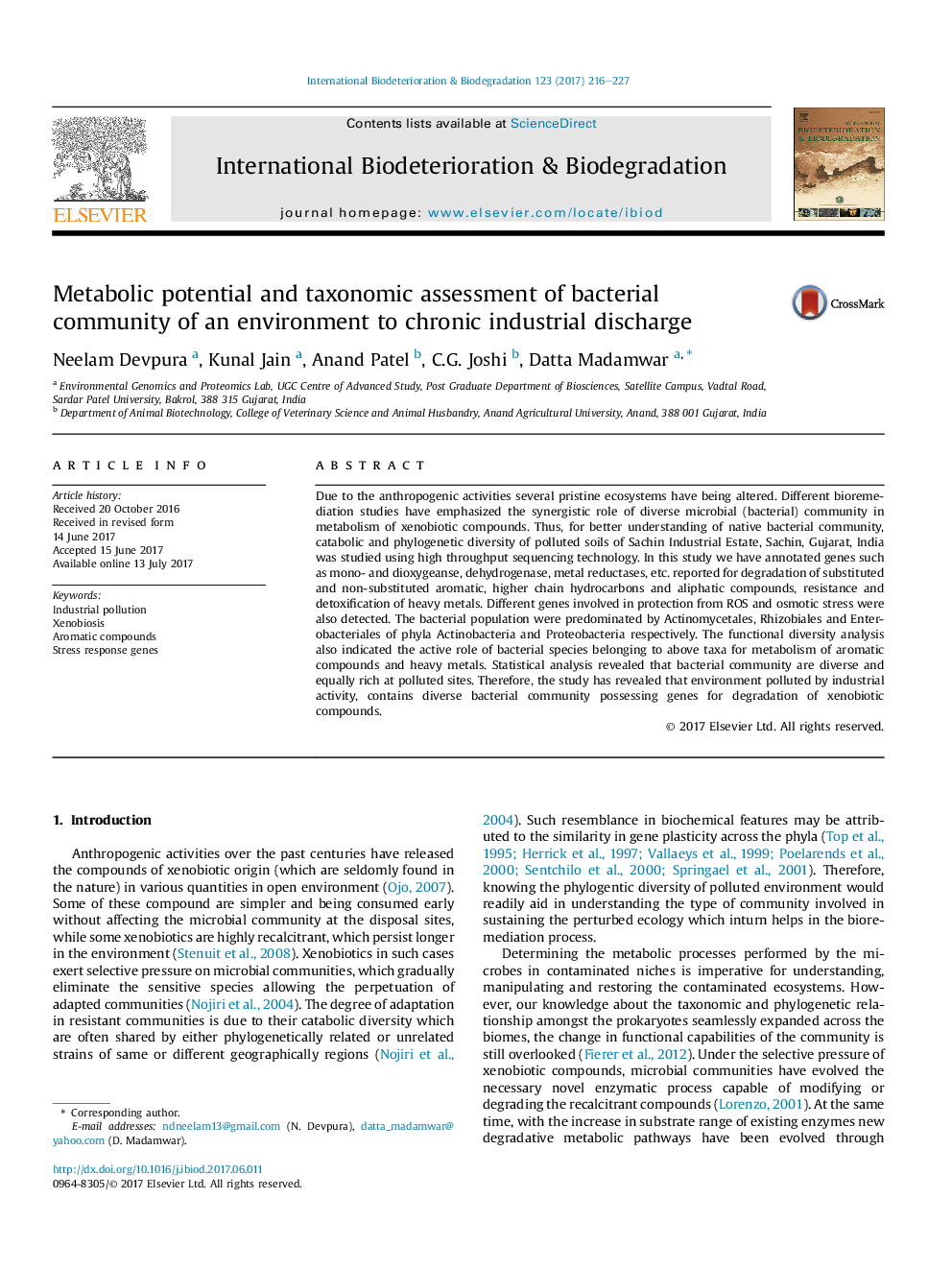| Article ID | Journal | Published Year | Pages | File Type |
|---|---|---|---|---|
| 5740270 | International Biodeterioration & Biodegradation | 2017 | 12 Pages |
â¢Indigenous microbial community were acclimatized for xenobiotic degradation.â¢Actinomycetales were the abundant bacterial community at industrially polluted soil.â¢Bacterial community were adapted for degradation of aromatic compounds.
Due to the anthropogenic activities several pristine ecosystems have being altered. Different bioremediation studies have emphasized the synergistic role of diverse microbial (bacterial) community in metabolism of xenobiotic compounds. Thus, for better understanding of native bacterial community, catabolic and phylogenetic diversity of polluted soils of Sachin Industrial Estate, Sachin, Gujarat, India was studied using high throughput sequencing technology. In this study we have annotated genes such as mono- and dioxygeanse, dehydrogenase, metal reductases, etc. reported for degradation of substituted and non-substituted aromatic, higher chain hydrocarbons and aliphatic compounds, resistance and detoxification of heavy metals. Different genes involved in protection from ROS and osmotic stress were also detected. The bacterial population were predominated by Actinomycetales, Rhizobiales and Enterobacteriales of phyla Actinobacteria and Proteobacteria respectively. The functional diversity analysis also indicated the active role of bacterial species belonging to above taxa for metabolism of aromatic compounds and heavy metals. Statistical analysis revealed that bacterial community are diverse and equally rich at polluted sites. Therefore, the study has revealed that environment polluted by industrial activity, contains diverse bacterial community possessing genes for degradation of xenobiotic compounds.
